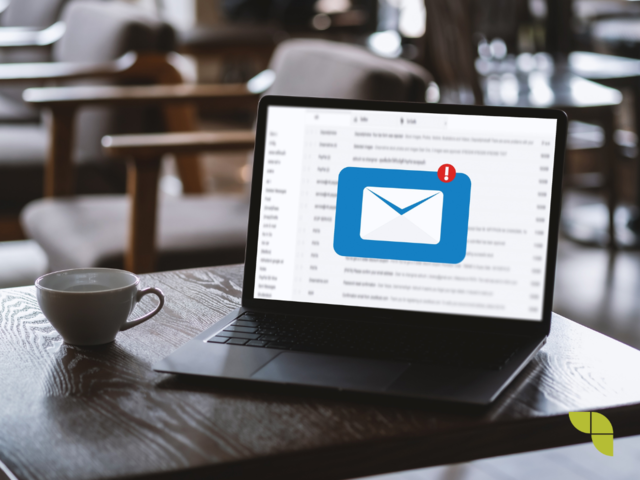Email is a powerful marketing tool and very effective for reaching and engaging with your audience. It can help you build relationships, drive traffic to your website and ultimately, increase sales. This guide will cover everything you need to know to get you started with your email marketing campaign, and how to achieve positive results.

What is email marketing?
Email marketing is the practice of sending emails to promote a product or service, build relationships, or engage with your client base. It's an efficient and effective way to reach a large number of people without breaking the bank. It can be used to promote sales, content and events and can help to increase brand awareness.
Why is email marketing important?
- Reach: Email marketing allows you to reach a large audience at a low cost. According to the Data & Marketing Association, the average return on investment for email marketing is $38 for every $1 spent. This is because it's relatively cheap to send an email compared to other forms of marketing and a large number of people can be reached at once.
- Personalization: Email marketing allows for personalization of messages and can target specific segments of the market. Subscriber data can also be utilized, including location, personal interests, and past behavior. This helps create relevant, targeted emails that are more likely to engage a potential customer.
- Tracking and data: The success of a campaign can be tracked through email marketing which informs future data-driven decisions. Most email marketing platforms provide detailed analytics, including metrics like open rates, click-through rates, and conversions. This shows what works and what doesn’t, thus guiding any strategy adjustments or lessons.
- Relationship building: Email marketing can help build and strengthen relationships. With quality and consistency in emails, trust and credibility can be established with subscribers. This can lead to increased brand loyalty and customer retention.
- Increased sales: Using email marketing to promote products or services can drive traffic to a website and therefore increase sales. Email marketing can also showcase products, offer special promotions, and provide customer support.
How to get started with email?
- Choose an email marketing platform: There are many email marketing platforms to choose from, such as Mailchimp, Constant Contact, and AWeber. Each platform has its own set of features and pricing, so it's important to choose one that meets your needs and budget.
- Build your email list: Your email list is a collection of email addresses from people who have expressed an interest in receiving your emails. You can build your email list or database, by offering something of value like a free download or discount. These kinds of offers can be leveraged in exchange for an email address.
- Create an email marketing campaign: An email marketing campaign is a series of emails that are sent to a specific group of people over a period of time. To create an email marketing campaign, you'll need to define your goals, segment your audience, and create a schedule for sending emails. This might include weekly newsletters, monthly promotions, and special event emails. It's important to be consistent with your email schedule so your subscribers know when to expect your emails.
- Write and design your emails: Once you have your campaign set up, it's time to start writing and designing your emails. Make sure to include a clear call to action and optimize your emails for mobile devices.
Here are some tips to help you succeed with email marketing:
- Personalize your emails: Personalization can increase open and click-through rates by up to 50%. Use the subscriber data you have collected to create personalized subject lines, content, and recommendations.
- Segment your audience: Segmenting your audience allows you to send targeted, relevant messages to specific groups of people. You can segment your audience based on factors like location, interests, and past behavior.
- A/B test your emails: A/B testing separates emails into two different versions, version A and version B. This type of testing allows you to compare the performance of the two versions of the email. Use A/B testing to find out which subject lines, calls to action, and design elements work best. In ROI, A/B tests results in a 37% increase.
- Analyze your results: Use email marketing platforms to track the success of your campaigns and so you can learn from your results. Look at metrics like open rates, click-through rates, and conversions to see what has been effective and where you can improve.
To ensure the success of your email marketing campaigns, it's important to follow best practices. Here are a few to keep in mind:
- Get permission before sending emails: Make sure you have permission from your subscribers before sending them emails. Using opt-in options is a good way to obtain permission and a clear unsubscribe option is also necessary in your emails.
- Use a clear and concise subject line: A subject line is the first thing your subscribers will see so it's important to make it catchy and to the point. Steer clear of using all caps and exclamation points and keep your subject line short and to the point.

Top mistakes you should avoid in email marketing:
- Not obtaining permission before sending emails: If you send emails to people who have not opted-in to receive them, you risk being flagged as spam. This can not only damage your reputation but will also decrease the effectiveness of your campaigns.
- Sending emails to inactive subscribers: If you have a large email list, it's likely that some of your subscribers will be inactive. These are people who haven't opened or clicked on any of your emails in a long time. Sending emails to inactive subscribers is a waste of resources and can actually damage your email deliverability. It's a good idea to regularly clean your email list by removing inactive subscribers.
- Not segmenting your audience: Segmenting your audience allows you to send targeted, relevant messages to relevant groups of people. If you send the same generic message to everyone on your email list, you risk alienating some of your subscribers and decreasing the effectiveness of your campaigns.
- Failing to test and optimize your emails: Use A/B testing to find out which subject lines, calls to action, and design elements work best. It's also important to optimize your emails for mobile devices, as more and more people are accessing email on their smartphones.
- Not analyzing your results: It's important to track the success of your email marketing campaigns and learn from your results. Look at metrics like open rates, click-through rates, and conversions. Use this information to make data-driven decisions and to continually improve your email marketing strategy.
- Ignoring best practices for email marketing: It is very important to follow best practices. To recap, these include using a clear and concise subject line, including a call to action, and optimizing your emails for mobile devices. It's also important to include a clear unsubscribe option and to follow spam laws and regulations.
Now is the time to start your email marketing strategy! You already have the tips to take the first steps successfully.
Are you ready to take your digital marketing skills to the next level and learn new techniques? If so, our academy can help you gain a comprehensive understanding of digital marketing to become a digital marketing professional. Don't hesitate to check out our courses today!



